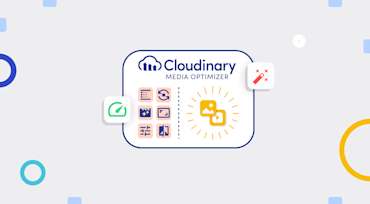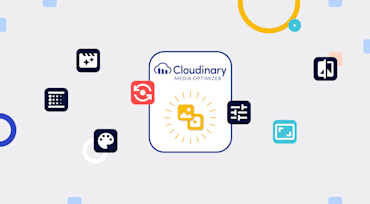Media management is at the heart of what WordPress does, and with Cloudinary’s WordPress Plugin, we’re all set to alleviate numerous pain points for WordPress users by adapting the plugin’s features developed by Cloudinary, and adapted by XWP, on its platform into a working WordPress plugin.

In technology, partnerships are frequently the key to success. Recognizing and leveraging each other’s strengths can lift up all parties involved—and even the industry as a whole. XWP’s collaboration with Cloudinary, the two companies’ complementary strengths, and the benefits accorded the CMS industry by the technology we built together are a shining example of effective partnerships. Most important, we share a common goal of forging a user-oriented and performant web at enterprise scale.

Early this year, we at Cloudinary decided to go all in and build something bigger and better than what we’d built before. The team kept its word: Cloudinary’s WordPress Plugin Version 3.0—called WP Plugin V3 in the rest of this post—is here and it’s awesome!

Nowadays, no way can we build modern apps for the web without considering visuals, which are one of the most efficient ways of communicating online. However, improvements in image quality over the years have exacted a price in larger files, slowing down page loads, especially in low-bandwidth regions or on mobile devices. To resolve that conundrum, turn to Cloudinary, a platform that offers the infrastructure for managing images in web apps. Additionally, Cloudinary’s reliable APIs serve visuals through multiple, fast content delivery networks (CDNs).

AVIF is a 2019 spinoff from the AV1 video format developed by the Alliance for Open Media (AOM), whose members include Amazon, Apple, ARM, Facebook, Google, Huawei, Mozilla, Microsoft, Netflix, and Intel. As an open-source and royalty-free video codec, AVIF delivers much higher compression rates than the older image codecs like JPEG and WebP, and is on par with the brand-new JPEG-XL format, which does not work on any browser yet.

To effectively engage with today’s digital audience, websites must be extremely visual. Even though high-quality images and videos play a key role in attracting and retaining visitors, those media assets also add to the page weight, load time, and bandwidth. Unoptimized content can result in performance issues, causing visitors to bounce off.

So, your boss comes to you in a panic: he's just heard about Google's Core Web Vitals initiative and needs you to optimize the company website right now! "No problem," you say, hiding your fear that it's not something that can be done overnight. Just taking the first metric, Largest Contentful Paint (LCP), how can you possibly identify all the large elements - most likely images or video posters - of the many hundreds of pages that make up your site? There are already thousands of high-resolution (read massive) media files stored away, which marketing could use any time. How are you going to make sure they're all compressed to a size small enough to be delivered within the threshold? Not to mention all the new images and videos that will be created over time...

User-generated content (UGC) took off with, first of all, the advent of the internet and, subsequently, social networks. Everyday consumers were given keys to the kingdom, so to speak, so that they, too, could compose and post content, simultaneously engaging with others online. Twitter, Facebook, Instagram, Snapchat, TikTok—the networks through which we can create and publish content have grown exponentially, and brands are becoming aware of the benefits of tapping into the gold mines offered by those networks.

Cloudinary reaps a myriad of open web traffic, from ad networks to e-commerce sites. Our Data Science team is dedicated to analyzing the data for use internally and externally.
A glance at any General Data Protection Regulation (GDPR) article would reveal that—unlike Android device IDs (AID), through which users can reset their web address—keeping user identifiers, such as Internal Protocol (IP) and Media Access Control (MAC) addresses, as well as International Mobile Equipment Identity (IMEI), violates privacy. As a solution, you can discard all privacy identifications or make them visible to users for reset.

As the world changes, so does technology. I don’t need to name more than a handful of antiquated technologies before you nod in agreement: floppy disks, Walkmans, phone booths, VHS tapes, each of which have been phased out or rendered useless by new solutions that meet the same need but much more effectively.
